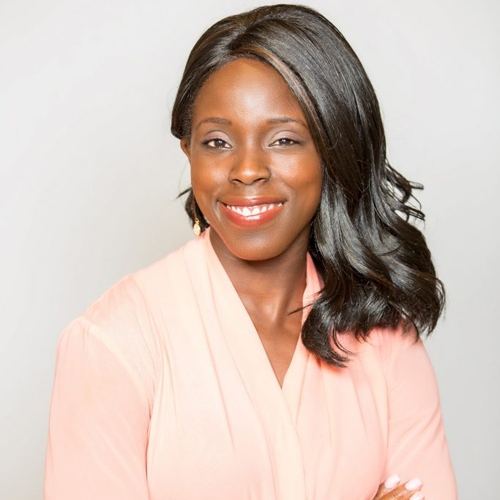Diversity Spotlight: Jennifer Cobbina
February 16, 2021
 What are your research interests?
What are your research interests?
My research areas of expertise center on police-community relations, youth violence, and concentrated neighborhood disadvantage, with a special focus on the experiences of minority youth and the impact of race, class, and gender on criminal justice practices. My research also focuses on corrections, prisoner reentry and the understanding of recidivism and desistance from crime.
You wrote a book titled “Hands Up, Don’t Shoot: Why the Protests in Ferguson and Baltimore Matter, and How They Changed America.” To write that book, you went to Ferguson to interview the protestors, what was that experience like/what did you learn from that experience?
It was intense. Two to three months following Michael Brown and Freddie Gray’s deaths in 2014 and 2015, I conducted nearly 200 interviews with protesters and residents of both cities. This was during the height of protests.
What I learned is that most protesters and residents in the study, the majority of whom were Black, had negative experiences with the police, which shaped their perceptions of the police. The cumulative impact of negative police encounters in Ferguson and Baltimore set the state for reactions to the killings of Michael Brown and Freddie Gray.
I found that large amounts of people took to the streets because first they believed Brown and Gray were victims of injustice and these were not isolated incidents. Either they themselves had been victims of police harassment, surveillance, or violence or they knew family members, friends, and neighbors who were the recipients of such acts by law enforcement. Second, many felt an overwhelming obligation to demonstrate, as they understood failure to do so would result in more Black people dying at the hands of the police. As a result, approximately two-thirds of people in my study who protested back then did so for the first time. Finally, among the activists that I interviewed, the desire to achieve change and put an end to police violence and systemic racism drove many to protest.
Even after experiencing high levels of aggressive policing, the most committed activists vowed to engage in future activism efforts - they remained resilient and undeterred by police action. Repressive police tactics appeared to deter those less committed to activism from street protests; however, they were motivated to engage in other forms of action within the community. In other words, they adapted different ways to engage in the overall ideological goals of the BLM movement through community action.
How do you hope your research will impact people and the Criminal Justice system going forth?
I hope that my research will bring awareness and historical context to contemporary issues regarding race and social justice – including policing, safety, and the correctional system.
I hope that my research, which is theoretically informed and empirically rich, will inform criminal justice policy and crime control practices. And I hope that my research will not only spotlight inequities within the criminal legal system but play a role in transforming the system such that it is fair, equitable, and just for all
Is diversifying the police force one way to improve relationships between police and communities of color?
Diversifying the police is not the answer to solving the problem of policing. Officers, regardless of their race, have similar implicit biases, particularly about Black people.In my book, Hands Up, Don’t Shoot, I interviewed nearly 200 protesters and residents of Ferguson and Baltimore following Michael Brown and Freddie Gray’s deaths. While 25% perceived that Black officers enforced the law more fairly than White officers and were more courteous and respectful when they police, 25% of those interviewed contended that African American officers operate aggressively when they encounter Black civilians. These sentiments were more common among Black Baltimoreans who actually had direct encounters with Black officers.
Remember too, that nearly half (42%) of the police force in the BPD was Black at the time Freddie Gray died while under police custody, including the police chief. 3/6 officers involved in Freddie Gray’s death were Black. The DOJ did their independent investigation and concluded that the BPD engaged in a pattern of unconstitutional racially biased policing. Similar results were found in the Chicago Police Department where half of the police force is Black; yet, the DOJ also concluded that the police department engaged in racially biased policing. So while the optics of hiring more black and brown people look good, we can't make the assumption that simply because a person is Black that they're going to know about the neighborhood.
What do you think of when you hear “Black History Month”?
When I think of Black History month, I think of it as showing recognition for the hard work and sacrifices made by African Americans. It is a time to reflect on the life-changing contributions, achievements, and success that Black people have made to the world. I see it as a way to look at the past regarding where have been as a country so that we know where we need so we can create a better future.
Why is diversity in academia important to you/what makes diversity important in academia?
Diversity in academia is important because a diverse college campus offers different perspectives and worldviews to engage with and learn from one another. When people interact with people who are different from them, then one’s learning is elevated to a different level. This can increase appreciation and understanding from someone from a different background that can change one’s thinking.
But just as important as diversity is equity and inclusion. Equity refers to ensuring that people have access to resources, opportunities, and advancement and that all barriers are removed that prevents that for some groups. Inclusion refers to how people from different identities feel as part of the larger group.; thus, it is important to have an inclusive environment that is collaborative, supportive, and respectful.

